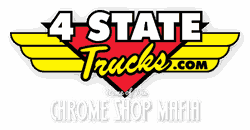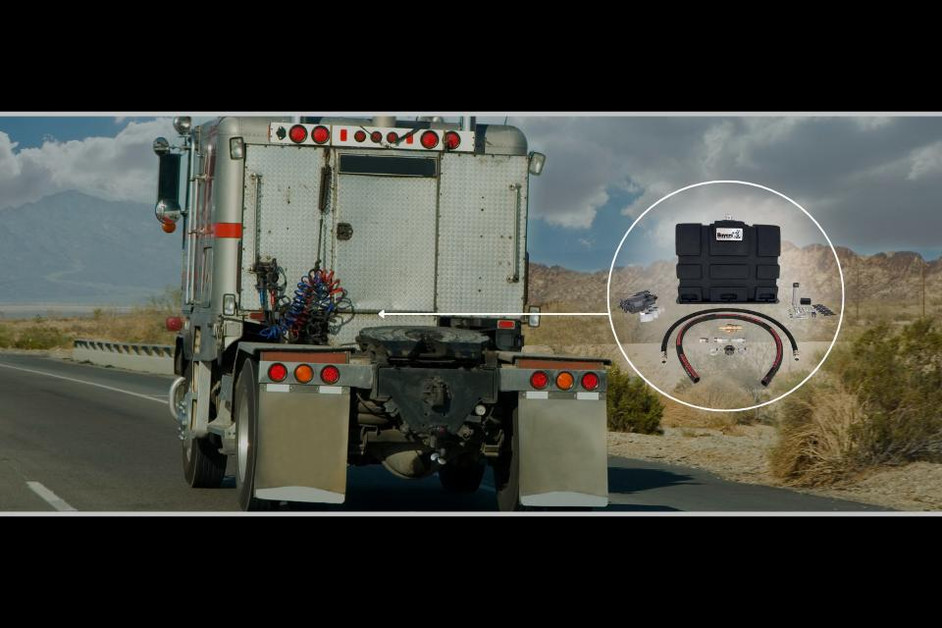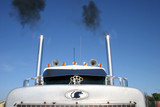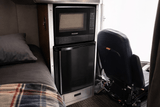Wet Line Kits for Semi Trucks 101: The Basics Explained
Ready to transform your rig into a hydraulic powerhouse? A semi truck wetline kit can do the trick. One of these will turn your truck from a normal highway hauler into a workhorse capable of handling tasks in agriculture, construction, bulk hauling or other industries.
But if you're already running dump trailers, walking floors, or tankers, then accurately installing a wetline kit ensures solid performance and profitability. Incorrect installs can lead to thousands of dollars down the drain on replacement components.
In this post, we'll break down what a wet line kit is, its purpose, and where you can buy one.
What Is a Wet Line Kit and What Does It Do?
A wet kit is a type of hydraulic system that transfers engine power from the PTO (power take-off) to trailer-mounted equipment using hoses, a pump, and oil. Common uses include operating end dumps, belt trailers, or walking floor systems.
Without a wet kit, your semi truck is limited to standard hauling. With one, it can perform complex tasks like lifting, pushing, or unloading—making it crucial equipment for specialized haulers.
Core Components of a Wetline Kit:
PTO: The Power Take-Off switch connects to the truck’s transmission and drives the hydraulic pump using rotational energy from the shaft.
Pump: Pressurizes the oil to move cylinders and activate trailer equipment.
Reservoir: Stores hydraulic fluid; may be frame-mounted or mounted behind the cab.
Control Valves: Available in manual, air-operated, or electric options to manage flow; the “tower” is the cab-mounted control component that houses: the PTO switch, hydraulic function switches, and pressure gauges or lights.
Filters and Return Lines: Keep the system clean and reduce heat and wear on internal components.
Quick-Connect Fittings: Allow fast installation and trailer swaps without tools.
Wet Kit Types by Trailer Application
Choosing the right wet line kit for a dump trailer or other application depends on your equipment’s flow rate, PSI, and duty cycle.
End Dump Kits
- Flow: 20–25 GPM
- Pressure: 2,000–3,000 PSI
- Cycle: Intermittent
- Ideal for construction haulers and contractors
Walking Floor Kits
- Flow: 30 GPM
- Pressure: ~2,000 PSI
- Cycle: Long
- Moves grain, mulch, or recyclables
Belt Trailer Kits
- Flow: 25 GPM
- Pressure: 2,500 PSI
- Duty cycle: Medium
- Used for ag and feed hauling
Blower/Wet Combo Kits
- Flow: 30–35 GPM
- Pressure: 2,500 PSI
- Dual function—powers both blower and hydraulics
Lowboy Hydraulic Neck Kits
- Flow: 15–20 GPM
- Pressure: 2,500–3,000 PSI
- Used to raise/lower detachable trailer necks
Each kit type requires proper sizing to prevent cavitation or overheating of the system during operation.
Can I Run a Wet Kit on an Automatic Transmission?
Yes—you can install a wet kit on trucks with automatic transmissions, but you’ll need a PTO model specifically designed for the gearbox.
Automatic-compatible PTOs are available for most semi trucks, but certified technicians are strongly recommended for this level of installation expertise.
Signs of a Failing Wet Kit
A malfunctioning wet kit can shut down your operation fast. Look for:
- Hydraulic oil leaks around hoses or fittings
- Abnormally slow or jerky trailer response
- Overheating of fluid and increased system heat
- Cavitation or whining from the pump
- PTO not engaging properly with the transmission
If you notice any of these signs, schedule service with a qualified shop or team of technicians immediately.
How to Choose the Right Wet Kit for Your Trailer Type
When selecting a wetline kit, consider:
- Trailer application: Dump, floor, or combo
- Flow and pressure needs
- Duty cycle and cooling capacity
- PTO and pump compatibility with your truck's transmission
- Your business location, weather, and operating week load
The right type of kit boosts efficiency, minimizes downtime, and supports long-term growth for your business.
Are Wet Kits Standardized?
Not fully. While many parts like hoses, filters, and fittings are interchangeable, trailer brands often require different:
- Flow ratings
- Connection sizes
- Hydraulic valve specs
Avoid surprises—always check your trailer’s equipment manual before purchasing.
What’s the ROI of Installing a Wet Kit?
A wet line kit typically pays for itself in 3–6 months. It unlocks new hauling opportunities, reduces load time, and increases trailer compatibility. You'll experience:
- Higher contract value
- Lower reliance on third-party unloading tools
- Improved system efficiency
Some shops even offer financing, making it easier to invest without stalling your cash flow.
Can I Finance a Wet Kit Through a Shop?
Yes! Many parts dealers and certified technicians offer:
- Install + payment plans
- Lease-to-own arrangements
- Deferred payments for fleets
Ask about wet kits financing when you contact your local installation center.
Are Quick Couplers Universal?
Quick couplers are not universal. You must match:
- Thread size (NPT, JIC, ORB)
- Pressure rating
- Flow capacity
ALWAYS verify compatibility between truck and trailer couplers. Use standardized fittings only when you're sure they meet your equipment specs.
What’s the Lifespan of a Properly Maintained Wet Kit?
With regular maintenance and regular inspections, wet kits can last:
- Pump: 5–10 years
- PTO: 5–8 years
- Reservoir/hoses/fittings: 10+ years
Key to longevity is:
- Clean fluid via inline filters
- Early detection of leaks or heat buildup
- Scheduled certified technician checks
Maintenance Tips for Optimal Performance
Routine care prevents expensive downtime:
- Inspect hoses, valves, and fittings weekly
- Monitor oil reservoir levels
- Change filters and fluid per manufacturer guidelines
- Watch for unusual noises or high system temperatures
PRO TIP: Keep a log of service intervals by location or week to help you stay organized.
Why Get a Wet Line Kit for Your Semi Truck
A wet line kit is an upgrade that can deliver a bit more flexibility, speed, and power to your vocational heavy duty rig. From end dump trailers to walking floors, regular maintenance and correct installation by certified technicians are key to a long, efficient lifespan.
Recent Posts
-
Peterbilt vs Mack: Choosing Between Rugged or Classic Styles
Let’s do a quick breakdown of Mack trucks vs Peterbilt trucks Mack is naturally the cheaper, more af …2nd Jan 2026 -
The Ultimate Guide to DPF Filters & DEF Systems on Semi Trucks
Let’s break down how to maintain peak emissions performance and avoid excessive repairs. In this gui …30th Dec 2025 -
How to Choose the Best Refrigerator for Your Semi Truck
Every OTR truck driver needs reliable cooling for food and beverages on long haul drives. That's whe …26th Dec 2025 -
Haul of Fame: Inside Ivy’s Poison – The Wild 1986 Peterbilt 359 That Refused to Die
If you hang around truck shows long enough, you start hearing the same names over and over. Some are …19th Dec 2025 -
The Ultimate Guide to Custom Semi Truck Upholstery (Everything You Need to Know)
Almost any custom show truck prioritizes quality interior upholstery material and stitch design, be …16th Dec 2025 -
What Does the FASS Fuel System Do?
Want to protect and clean your diesel fuel system in one go? The FASS (fuel air separation system) i …12th Dec 2025 -
Semi Truck Muffler Guide
Need to lower your exhaust and engine noise, but aren’t sure what muffler to get? We offer Pittsburg …5th Dec 2025 -
Custom Underglow Light Setups on Semi Trucks
If you're looking for a way to dramatically enhance the look and presence of your semi truck at nigh …28th Nov 2025 -
Common Myths and Mistakes When Buying Aftermarket Semi Truck Parts (Ultimate Guide)
Cost, convenience, and make/model fitment are the top priorities when it comes to buying aftermarket …18th Nov 2025 -
Haul of Fame: Tony's Custom Retro W900 Kenworth
Tony Huttenstine is a seasoned owner-operator. Over the years, he has poured enormous time, money, a …14th Nov 2025















